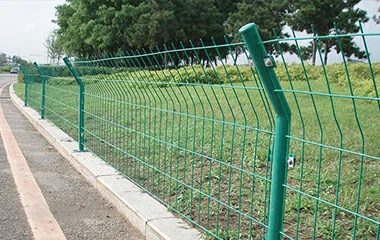 TEL:
+86-13102802206
TEL:
+86-13102802206
 Email:
fencenetting@china.com
Email:
fencenetting@china.com
 Language
Language
 TEL:
+86-13102802206
TEL:
+86-13102802206
 Email:
fencenetting@china.com
Email:
fencenetting@china.com
 Language
Language


The Art and Practice of Tying Barbed Wire
Barbed wire, often seen adorning fences in rural landscapes or marking boundaries, serves both a practical purpose and a symbolic one. While its primary function is to deter intruders and protect livestock, it also represents the creativity and resilience of agricultural life. Tying barbed wire correctly is a skill that combines knowledge, technique, and the right tools to ensure not just durability but also safety.
Understanding Barbed Wire
Before delving into the tying process, it's important to understand what barbed wire is composed of. Typically made from galvanized steel, barbed wire is designed to withstand harsh weather and resist corrosion. It features sharp barbs spaced along the wire, which acts as a formidable barrier to animals and people alike. It is essential in many settings, from agricultural farms to military compounds.
Preparation for Tying Barbed Wire
Successful installation starts with proper preparation. Gather the necessary tools including gloves (to protect your hands from sharp edges), wire cutters, a spool of barbed wire, and tensioning tools if necessary. Wearing gloves is crucial as it reduces the risk of cuts or scratches, which can be common when handling barbed wire.
Identify the two posts that the wire will be connected to. They may be wood or metal, but it is crucial that they are sturdy and capable of supporting the tension of the wire. Proper spacing is vital for maintaining the integrity and effectiveness of the barrier.
The Tying Process

1. Attaching the Wire to the Post Begin by unraveling the barbed wire spool. Start at one end and secure it to the first post. Wrap the end of the wire several times around the post and fasten it tightly. Using a tie wire or a specific barbed wire clip ensures that the wire remains firmly attached.
2. Pulling the Wire Once secured, pull the wire taut. This step is critical; if the wire is too loose, it will sag and may become less effective as a deterrent. Use a tensioning tool if available, or perform this step manually by pulling the wire toward the second post.
3. Attaching to the Second Post Once the barbed wire is taut, it's time to secure it to the second post. Similar to the first post, wrap the wire around the second post multiple times. This added security prevents the wire from unraveling and enhances the overall strength of your fence.
4. Tying Off After wrapping the wire around the post, create a secure knot to tie off the final section of the wire. A common knot is the figure-eight knot or an equivalent that creates a non-slip connection. Ensure that the knot is tight and check that there are no loose ends.
5. Final Check Finally, conduct a thorough check of the entire length of the barbed wire. Inspect for any potential weak spots or areas that may need additional tension. Ensuring that the barbs are facing outward will enhance its effectiveness in keeping unwanted visitors at bay.
Maintenance and Safety
Once installed, the barbed wire fence requires periodic maintenance. Check for signs of rust or wear, and immediately replace any damaged sections. It's also essential to monitor the tension; over time, environmental factors may cause the wire to loosen.
In conclusion, tying barbed wire is a practical skill that mirrors the dedication and hard work inherent to agricultural life. By following these steps, one can ensure a strong and effective barrier. Understanding both the physical and psychological roles that barbed wire plays in our landscapes helps cultivate a deeper appreciation for this ubiquitous yet often overlooked element of our environment.